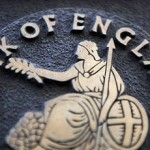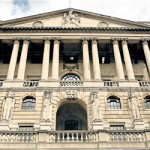U.K. regulators hit hurdles on fixing benchmarks

U.K. regulators are expected to report in coming weeks on plans to fix global financial benchmarks. But efforts so far under way are already running into difficulties.
Some market participants are worried that a new benchmark silver price isn’t precisely reflecting trades, and a proposed change to the principal currency benchmark has been pushed into next year. Meantime, debate about how to fortify the London interbank offered rate, or Libor, against manipulation continues years after problems were first discovered.
Benchmark prices take a snapshot of a day’s trading action, and they are essential to a wide variety of financial activity, such as valuing mutual funds, establishing derivative contracts and setting prices for sales of physical metals.
Concerns that benchmarks have been manipulated by traders has drawn regulatory scrutiny, especially in the foreign-exchange market, where a scandal led to total fines of $4.3 billion for six banks.
The U.K. Treasury, the Bank of England and the U.K.’s Financial Conduct Authority plan to publish preliminary findings on toughened-up rules for benchmarks before the end of the year, according to two people familiar with the matter. That report is expected to recommend that the FCA be given powers to regulate a number of benchmarks, including for the foreign-exchange, gold, silver, crude-oil and swap-rates markets.
But pre-emptive attempts to repair the benchmarks have faltered.
“The hurdles are more about process and compliance than anything technical or ideological,” said David Clark, chairman of the Wholesale Markets Brokers Association, which represents interdealer brokers mainly active in the currencies space. “Benchmark providers and users are all coping with regulatory change issues which is not something that can be done overnight.”
The main benchmark for currencies, or so-called fix, is the rate calculated daily at 4 p.m. in London by WM/Reuters, a unit of State Street Corp. WM/Reuters has proposed several changes to the benchmark, but banks and investors have been slow to adapt the new methodology, and implementation has now been delayed until February 2015, at the earliest.
“We received a number of requests to extend the notification period for the proposed methodology changes and to implement the changes at a later date in order to provide our customers with more time to prepare,” said a spokeswoman for State Street.
Some traders believe that deadline may be tough to meet, because banks have to adjust the complex algorithms that manage daily trading. That is a process that requires “several months to say the least,” according to a senior trader at a pension fund, who asked not to be identified.
The main precious metals markets have moved much faster to push through changes, but results have been mixed. Independent, electronic platforms are taking over responsibility for setting daily prices from the small cliques of banks that used to meet behind closed doors. The silver, platinum and palladium markets have all gone electronic in the past few months, and the gold market is set to move early next year.
But already there has been criticism of the new LBMA Silver Price, the first metals benchmarks to go electronic in August. Some market participants believe the price isn’t quite reflecting market trades.
“There’s certainly been some unusual price action around the fix,” said Rob Doyle, chief financial officer at Pan American Silver. Still, he said: “It seems to be the best idea out there, and we retain our belief that it is roughly representative of the market.”
The LBMA’s chief executive, Ruth Crowell, said she wasn’t aware of any issues with the silver fix, and that the group has sought to learn from the silver fix as it works on the new gold fix. “It’s understandable that there would be teething problems,” she said. A spokesman for Thomson Reuters, which operates the new silver platform with CME Group Inc., said it continues to “monitor industry feedback” and that the new benchmark “has been well received as a significant improvement.” CME said it was continually improving upon the platform, but that the fix has worked “flawlessly” establishing a price and that it hadn’t received any complaints.
“It’s working as well as it can … [and] our clients have accepted this price,” said Radek Zalozinski, director of the department of market and credit risk management at KGHM, one of the world’s largest silver and copper miners. “For now we’re satisfied, but we’re looking very carefully at the market developments.”
Global scrutiny of benchmarks began with Libor, and an investigation into its manipulation by U.S. and British regulators led to $4 billion in fines on seven banks and brokerages. The British Bankers’ Association, a banking lobby group, used to compute Libor. The group handed it over to Intercontinental Exchange Inc. in February. As recently as October, Libor’s calculation methods were still being tweaked to make the benchmark less susceptible to manipulation.
Source: marketwatch – U.K. regulators hit hurdles on fixing benchmarks




























